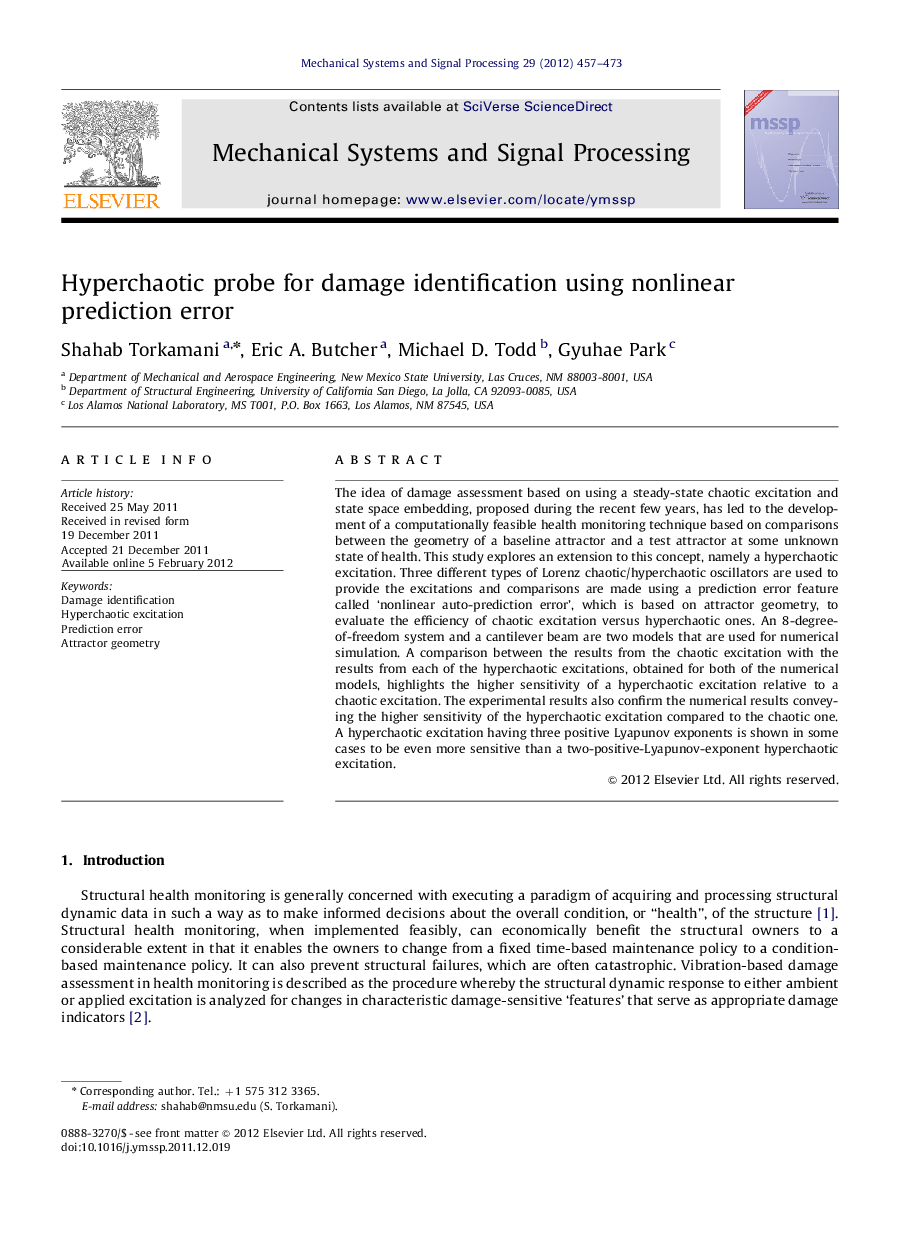| کد مقاله | کد نشریه | سال انتشار | مقاله انگلیسی | نسخه تمام متن |
|---|---|---|---|---|
| 561482 | 1451886 | 2012 | 17 صفحه PDF | دانلود رایگان |

The idea of damage assessment based on using a steady-state chaotic excitation and state space embedding, proposed during the recent few years, has led to the development of a computationally feasible health monitoring technique based on comparisons between the geometry of a baseline attractor and a test attractor at some unknown state of health. This study explores an extension to this concept, namely a hyperchaotic excitation. Three different types of Lorenz chaotic/hyperchaotic oscillators are used to provide the excitations and comparisons are made using a prediction error feature called ‘nonlinear auto-prediction error’, which is based on attractor geometry, to evaluate the efficiency of chaotic excitation versus hyperchaotic ones. An 8-degree-of-freedom system and a cantilever beam are two models that are used for numerical simulation. A comparison between the results from the chaotic excitation with the results from each of the hyperchaotic excitations, obtained for both of the numerical models, highlights the higher sensitivity of a hyperchaotic excitation relative to a chaotic excitation. The experimental results also confirm the numerical results conveying the higher sensitivity of the hyperchaotic excitation compared to the chaotic one. A hyperchaotic excitation having three positive Lyapunov exponents is shown in some cases to be even more sensitive than a two-positive-Lyapunov-exponent hyperchaotic excitation.
► Improved sensitivity to damage in a hyperchaotic excitation used with NAPE feature.
► Improved robustness of NAPE in diagnosing insignificant damages than ALAVR feature.
► Hyperchaotic excitations with more PLEs can possibly be more sensitive to damage.
► Not just attractor dimensionality controls sensitivity of attractor-based features.
Journal: Mechanical Systems and Signal Processing - Volume 29, May 2012, Pages 457–473